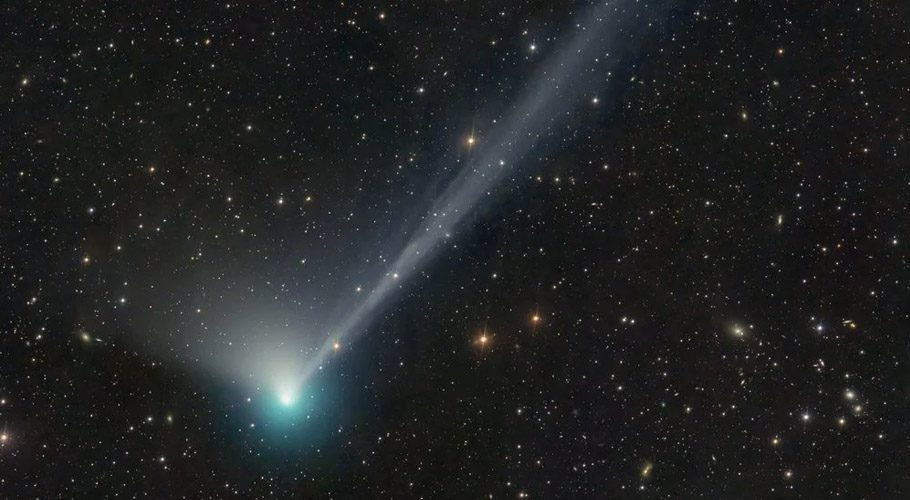Astronomers have observed something unusual happening with the rare green comet, Comet ZTF (C/2022 E3), as it travels toward Earth and is likely to be visible to the naked eye in the first week of February.
Also read: Astronomers capture record-breaking radio signal from extremely distant galaxy
An image taken by an Austrian comet hunter reveals a disconnection in a stunning green comet’s tail that may have been caused by turbulent space weather.
Seasoned astrophotographer Michael Jäger took image of the Comet C/2022 E3 (ZTF) on Tuesday (Jan. 17) after driving 500 miles (800 kilometers) from Austria to Bavaria in Germany to get a clear view of the night sky. Jäger shared the image on Twitter, along with more photos video of the comet.
“The journey was not in vain,” Jäger told Space.com in an email. He added that when it comes to capturing images of comets, an astrophotographer can waste no time as these icy balls change rapidly when they reach the warmer regions in the inner solar system.
Also read: Researchers use high-powered lasers to unlock secrets of Universe
Astronomers found that the comet is being disconnected and there is something weird happening to its tail. The disconnect is likely due to solar wind hitting the comet. A study in 2018 found that when comets interact with the solar wind, straight and narrow plasma tails are often formed. “The most remarkable phenomenon of the plasma tails is the disconnection event, in which a plasma tail is uprooted from the comet’s head and moves away from the comet,” says a report.
Also read: Scientist make device to harvest water from air, generate hydrogen fuel
According to SpaceWeather.com(opens in new tab), this disruption in the tail is likely caused by turbulent space weather, namely the stronger-than-usual solar wind that has been released during a recent coronal mass ejection (CME). CMEs are bursts of highly energetic particles from the sun’s upper atmosphere, the corona, that travel across the solar system, interfering with the atmospheres of planets and other bodies.




































